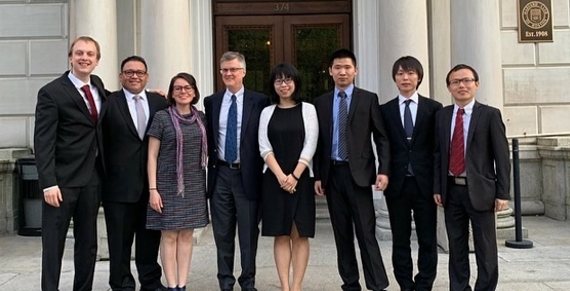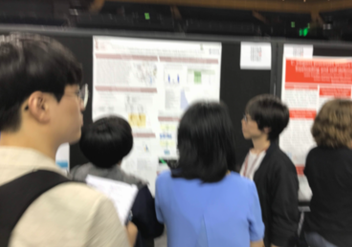The environment for research at Joslin Diabetes Center and my research
Takafumi Ogawa
It have been hot for a while after the Independence-day. However, the days are getting shorter day by day these days.
I am going to introduce my work and the environment to study.
In the Boston medical area which Joslin Diabetes Center is located, there are many hospitals which have research division around Harvard Medical School. These hospitals have two types of research division, one is clinical research which is for medical applications or basic research which is for pursuing the mechanism of physiological phenomenon. Blackwell lab is in basic research division and working on the research of aging to clarify the mechanism of age-related disease including diabetes.
We use Caenorhabditis elegans as a model of human. They are only 1mm length, easy to manipulate genetically and have short lifespan (3 weeks usually).
I am focusing on mechanistic Target of Rapamycin (mTOR). mTOR is a serine/threonine kinase which regulates the growth and the proliferation in response to diverse nutrients and nutrient induced signals, like insulin. mTOR forms two complexes, mTORC1 and mTORC2. mTORC1 that senses nutritional and environmental cues, including amino acids, regulates growth via coordination of transcription and translation. The depletion of nutrients inhibits mTORC1 activity, which promotes repression of transcription and translation and activation of autophagy, that results in longevity. mTORC2 is also implicated in lifespan through a regulation of metabolism and cytoskeleton. To identify a new function of mTORC1 is an important challenge due to understand the lifespan regulation. I have performed the genetic screening to clarify new target of mTORC1.
The scientific community in this area enhances the interaction between fellows, students and professors. We have monthly meeting with other groups working with C. elegans. We talk our new data by rotation and discuss it, to promote the development and increase the speed in our research. Besides, a lot of symposium are held. We can learn not only aging/lifespan but also other sessions including basic research or clinical research.
When I attended International C. elegans Conference at UCLA, I heard many talks of famous researchers and interacted with many researchers at the poster session. As for the research, we can use core facilities which share research resources such as instruments, technologies and services. I believe these interactions beyond boundaries of nations and fields give me an awareness for my research.




